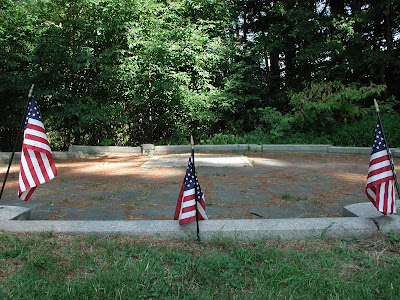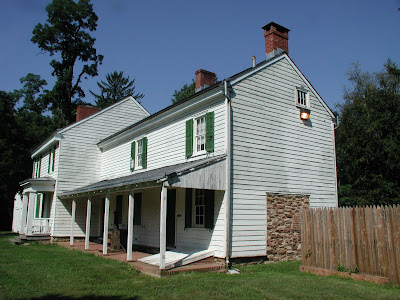
Nikon Corporation is pleased to announce the introduction of the new DX-format digital SLR, Nikon D300.
Combining innovative Nikon technologies with advanced new features and precision engineering, the D300 delivers the ultimate blend of DX-format performance.
The sheer imaging power of a new 12.3 effective-megapixel DX Format CMOS image sensor with integrated A/D converter; the precision processing and astounding speed of Nikon's original EXPEED digital image processing concept; the unprecedented focusing speed and precision of a new 51-point AF system; Nikon's innovative new Scene Recognition System for optimal autofocus, auto exposure and auto white balance performance; the composition and focusing ease of a large new pentaprism viewfinder that provides full 100% frame coverage; an expansive 920,000-dot, high-resolution 3-inch LCD monitor with wide viewing angle; near-instant power-up and immediate response; all with the advantages of Nikon DX-format agility and system expandability. Meet the new generation digital SLR camera that blends all these advanced features into one fine package – the Nikon D300.
Major Features
New DX-format CMOS image sensor with 12.3 effective megapixels
The D300 features a new 12.3 effective megapixel DX-format CMOS image sensor. It not only produces fine details with sharp resolution, but also provides a broad light sensitivity range of ISO 200 to ISO 3200, (plus LO 1 for IS0 100 equivalent and HI 1 for IS0 6400 equivalent settings; Auto ISO control is also available). The CMOS sensor's integrated A/D converter features the ability to select between 12-bit and 14-bit conversion, making it possible to shoot using high-quality 14-bit NEF (RAW) format. All internal processing is handled in full 16-bit color, color, benefiting from a fine balance between performance with outstanding speed that defies this level of precision and natural-looking images that benefit from faithful color and tone reproduction. Lateral chromatic aberration is also reduced.
EXPEED – Nikon’s image processing concept embodied
As Nikon’s new digital image-processing concept – featuring the core ideas of our image creation and processing – EXPEED incorporates the optimized knowhow and technologies we have accumulated throughout our long history while receiving users’ requirements. It realizes diversified functions to ensure high picture quality and high-speed image processing.
* For details, see “Nikon’s original digital image-processing concept EXPEED”
High-speed continuous shooting
The D300 is capable of shooting at a rapid 6 fps*1, and as fast as 8 fps*2 when using the Multi-Power Battery Pack MB-D10, in continuous bursts of up to 100 shots*3 at full 12.3 megapixel resolution. The Nikon D300 is also the first digital SLR to support next-generation high-speed card UDMA, which enables high speed recording.
*1 When using one EN-EL3e battery installed in the camera
*2 When using batteries other than Rechargeable Li-ion Battery EN-EL3e
*3 NORMAL – LARGE image setting, using a SanDisk Extreme IV CompactFlash 1GB card
Immediate response
Near-instant power-up within 0.13 seconds, a shutter release time lag of a mere 0.045 seconds*, and viewfinder blackout time of approximately 0.1 seconds contribute to optimized all-around performance that lets photographers respond to any sudden shutter opportunities.
* When shooting in JPEG, TIFF, or 12-bit NEF (RAW) formats
Scene Recognition System
By improving the 1,005-pixel RGB sensor, which was first incorporated in the Nikon F5, information from the sensor can be utilized for auto exposure, auto white balance and autofocus. For example, 3D tracking in AF realized by using the Scene Recognition System tracks subject position, and automatically shifts AF points to be used according to the subject’s movement within the frame. This system also contributes to improved accuracy of auto exposure and auto white balance.
* For details, see “Scene Recognition System for more accurate autofocus, auto exposure and auto white balance”
AF system employing high-density 51-point AF
Multi-CAM 3500DX autofocus sensor module featuring 51 AF points is incorporated. 15 cross-type sensors located in the center provide subject detection capability with lens apertures as small as f/5.6. 51 AF points can be utilized in various focus area modes selected according to subject condition. In many aspects, the functions of AF points are linked with the Scene Recognition System to offer superior subject detection and focus tracking performance. A single AF point can be selected from 51 or 11 focus points. Dynamic AF mode enables appropriate focusing by detecting subjects with a zone containing many AF points located densely. In this mode, the number of AF areas, including user selected AF points and backup points, can be selected from either 9, 21 or 51. In addition, newly employed “3D tracking” mode shifts the focus point automatically to respond to the subject’s movements. Auto-area AF mode gives greater priority to the subject’s position in selecting AF points.
Picture Control System
Picture Control System is a new function to enable selection and adjustment to create pictures easily according to skills of users from novices to professionals. When settings are the same, even with different cameras, you can get the same picture tone. Picture Control System offers four fundamental setting options – Standard, Neutral, Vivid and Monochrome – enabling image parameters (sharpening, tone compensation, brightness, tone and saturation) to be easily adjusted and customized.
* For details, see “Picture Control System’s image optimization functions enable easy adjustments”
Two Liveview modes available
Liveview function enables shooting while confirming subjects in the LCD monitor.
In Handheld mode, which allows recomposing of the frame prior to actual shooting, ordinary TTL phase-difference AF using all 51 AF points including 15 cross-type points is activated.
Tripod mode is designed for precise focus accuracy with still subjects and tripod stabilization. In this mode, focal-plane contrast AF on a desired point within a specific area is possible. Remote view, focusing and shooting are also made possible on a PC (wired or wirelessly).
Large, bright viewfinder that achieves 100% frame coverage
TThe D300's new eye-level pentaprism viewfinder aids composition and adds assurance to focus operations by providing full 100% frame coverage and large 0.94x magnification, as well as an eyepoint of 19.5 mm (at -1.0 m-1) and built-in diopter adjustment range of -2 to +1 m-1.
Durability that will go the distance
Testing to 150,000 cycles stands as firm testament to the durability of the new shutter unit for the D300. Its magnesium alloy chassis combines light weight with solid durability, while the body features an enhanced sealing system that helps protect against moisture and dust.
Active D-Lighting
D-Lighting incorporated in the conventional digital SLRs enables editing after the image is taken. In addition to the D-Lighting, newly developed Active D-Lighting is employed in the Nikon D300.
Active D-Lighting lets users choose the intensity from among “High”, “Normal”, “Low” or “Unchanged” prior to shooting. The conventional method of simply expanding dynamic range is not employed in compensation. Instead, localized tone control technology is utilized to prevent images from looking flat with low contrast. As a result, “lost highlights” and “lost shadows” are well compensated while maintaining proper contrast.
Self-cleaning Sensor Unit for efficient dust reduction
The D300 is the first Nikon D-SLR camera to employ a Self-cleaning Sensor Unit. Four different resonance frequencies vibrate the optical low pass filter in front of the image sensor to shake particles free and reduce the presence of dust.
Exclusive Wireless Transmitter WT-4 (optional)
The WT-4 supports wired LAN (10BASE-T, 100BASE-TX) and wireless LAN (IEEE 802.11b/g, 11a), and incorporates thumbnail mode as a new function.
It realizes wireless connection of cameras with a PC, enabling thumbnail display of images taken with up to five of them and downloading of images selected. Also, by using Camera Control Pro 2 (optional), wireless remote view/control shooting is made possible with the D300’s Liveview function.
* For details, see “WT-4 / Camera Control Pro 2 Software”
Multi-Power Battery Pack MB-D10 (optional)
The optional new Multi-Power Battery Pack MB-D10 supports 3 types of batteries and features sequential power supply with auto-switching to the battery installed inside the camera body. When attached, it also enables high-speed continuous shooting at a rate of 8 fps*1 for up to 100 consecutive shots*2.
*1 When using batteries other than the Rechargeable Li-ion Battery EN-EL3e
*2 NORMAL – LARGE image setting, using a SanDisk Extreme IV CompactFlash 1GB card
Other Features
- The large top control panel (46 x 20.8 mm) features an improved interface with lettering that can be switched to best match shooting conditions
- HDMI Output supports HDTV display
- Supports GPS devices via optional GPS Adapter Cord MC-35
- Retouch Menu provides handy access to Filter Effects, Trimming, Red-eye correction, Image overlay and other in-camera editing functions
- Software Suite CD-ROM included
 Nikon Digital SLR Camera D300 Specifications
Nikon Digital SLR Camera D300 Specifications
Type of Camera
Single-lens reflex digital camera
Effective Pixels
12.3 million
Image Sensor
CMOS sensor, 23.6 x 15.8 mm; total pixels: 13.1 million; Nikon DX format
Image Size (pixels)
4,288 x 2,848 [L], 3,216 x 2,136 [M], 2,144 x 1,424 [S]
Dust-reduction
System Clean image sensor,
Image dust-off data acquisition (Capture NX required)
Sensitivity
ISO 200 to 3200 in steps of 1/3, 1/2 or 1 EV with additional settings of approx. 0.3, 0.5, 0.7 and 1 EV (ISO 100 equivalent) under ISO 200, and approx. 0.3, 0.5, 0.7 and 1 EV (ISO 6400 equivalent) over ISO 3200
File System Compliant with DCF 2.0, DPOF and Exif 2.21
Storage System
NEF 12-bit or 14-bit (uncompressed, lossless compressed or compressed RAW)
TIFF (RGB)
JPEG: JPEG baseline-compliant
Storage Media
CompactFlash (Type I/II, compliant with UDMA), Microdrives
Release Modes
1) Single frame [S] mode
2) Continuous low speed [CL] mode: 1 to 7*1 frames per second
3) Continuous high-speed [CH] mode: 8 frames per second*1, 6 frames per second*2
4) Liveview [LV] mode
5) Self-timer mode
6) Mirror-up [Mup] mode
*1. When using AC Adapter EH-5a/EH-5 or Multi-Power Battery Pack MB-D10 with batteries other than Rechargeable Li-ion Battery EN-EL3e
*2. When using Rechargeable Li-ion Battery EN-EL3e (When shooting in Continuous-servo AF (C), Shutter-Priority Auto [S] or Manual [M] exposure modes, at a shutter speed of 1/250 sec. or faster with other settings at default)
White Balance
Auto (TTL white balance with 1,005-pixel RGB sensor), seven manual modes with fine-tuning, color temperature setting, white balance bracketing possible (2 to 9 frames in increments 1~3)
Liveview Hand-held mode: TLL phase-difference AF with 51 focus areas (15 cross-type sensors)
Tripod mode: focal-plane contrast AF on a desired point within a specific area
LCD Monitor 3-in., approx. 920,000-dot (VGA), 170-degree wide viewing angle, 100% frame coverage, low-temperature polysilicon TFT LCD with brightness adjustment
Playback Function
1) Full frame
2) Thumbnail (4 or 9 segments)
3) Zoom
4) Slideshow
5) RGB histogram indication
6) Shooting data
7) Highlight point display
8) Auto image rotation
Delete Function
Card format, All photographs delete, Selected photographs delete
Video Output
NTSC or PAL; simultaneous playback from both the video output and on the LCD monitor available
HDMI Output
Supports HDMI version 1.3a; Type A connector is provided as HDMI output terminal; simultaneous playback from both the HDMI output terminal and on the LCD monitor not available
Interface
Hi-Speed USB
Text Input
Up to 36 characters of alphanumeric text input available with LCD monitor and multi-selector; stored in Exif header
Lens Mount
Nikon F Mount with AF coupling and AF contacts
Compatible Lenses
1) DX AF NIKKOR: All functions possible
2) D-/G-type AF NIKKOR (excluding IX NIKKOR lenses): All functions possible (excluding PC Micro-NIKKOR)
3) AF NIKKOR other than D-/G-type (excluding lenses for F3AF): All functions except 3D Color Matrix Metering II possible
4) AI-P NIKKOR: All functions except Autofocus, 3D Color Matrix Metering II possible
5) Non-CPU AI NIKKOR: Can be used in exposure modes A and M; electronic range finder can be used if maximum aperture is f/5.6 or faster; Color Matrix Metering and aperture value display supported if user provides lens data
Picture Angle
Equivalent in 35mm [135] format is approx. 1.5 times lens focal length
Viewfinder
SLR-type with fixed eye-level pentaprism; built-in diopter adjustment (-2.0 to +1.0 m-1)
Eyepoint
19.5 mm (-1.0 m-1)
Focusing Screen
Type-B BriteView Clear Matte screen Mark II with superimposed focus brackets and On-Demand grid lines
Viewfinder Frame Coverage
Approx.100% (vertical and horizontal)
Viewfinder Magnification
Approx. 0.94x with 50mm lens at infinity; -1.0 m-1
Autofocus
TTL phase detection, 51 focus points (15 cross-type sensors) by Nikon Multi-CAM 3500DX autofocus module; Detection -1 to +19 EV (ISO 100 at 20°C/68°F); AF fine adjustment possible
Focal plane contrast [in Liveview (Tripod) mode]
Lens Servo
1) Autofocus: Single-servo AF (S); Continuous-servo AF (C); Focus tracking automatically activated according to subject status
2) Manual focus (M) with electronic rangefinder
Focus Point
Single AF point can be selected from 51 or 11 focus points
Liveview (Tripod mode): Contrast AF on a desired point within entire frame
AF Area Mode
1) Single point AF
2) Dynamic Area AF [9 points, 21 points, 51 points, 51 points (3D-tracking)]
3) Automatic-area AF
Focus Lock
Focus can be locked by pressing shutter-release button halfway (single-servo AF) or by pressing AE-L/AF-L button
Exposure Metering System
TTL full-aperture exposure metering using 1005-pixel RGB sensor
1) 3D Color Matrix Metering II (type G and D lenses); color matrix metering II (other CPU lenses); color matrix metering (non-CPU lenses if user provides lens data; metering performed)
2) Center-weighted: Weight of 75% given to 6, 8, 10, or 13 mm dia. circle in center of frame or weighting based on average of entire frame (8 mm circle when non-CPU lens is used)
3) Spot: Meters approx. 3 mm dia. circle (about 2.0% of frame) centered on selected focus point (on center focus point when non-CPU lens is used)
Metering Range
1) 0 to 20 EV (Matrix or center-weighted metering)
2) 2 to 20 EV (Spot metering) (ISO 100 equivalent, f/1.4 lens, at 20ºC/68ºF)
Exposure Meter
Coupling Combined CPU and AI
Exposure Modes
1) Programmed Auto [P] with flexible program
2) Shutter-Priority Auto [S]
3) Aperture Priority Auto [A]
4) Manual [M]
Exposure Compensation
±5 EV in increments of 1/3, 1/2 or 1 EV
Exposure Lock
Exposure locked at detected value with AE-L/AF-L button
Exposure Bracketing
Exposure and/or flash bracketing (2 to 9 exposures in increments of 1/3, 1/2, 2/3 or 1 EV)
Picture Control System
Four setting options: Standard, Neutral, Vivid, Monochrome; each option can be adjusted
Shutter
Electronically-controlled vertical-travel focal plane shutter, 1/8,000 to 30 s. in steps of 1/3, 1/2 or 1 EV, Bulb
Sync Contact
X=1/250 sec.; flash synchronization at up to 1/320 sec. (FP) adjustable with Built-in Speedlight or optional Speedlight (will reduce GN)
Flash Control
1) TTL: TTL flash control by 1,005-pixel RGB sensor
Built-in Speedlight, SB-800, SB-600 or SB-400: i-TTL balanced fill-flash and standard i-TTL flash
2) AA (Auto Aperture-type) flash: Available with SB-800 used with CPU lens
3) Non-TTL Auto: Available with Speedlights such as SB-800, 28, 27, and 22S
4) Range-priority manual flash; available with SB-800
Flash Sync Mode
1) Front-curtain Sync (normal)
2) Red-eye Reduction
3) Red-eye Reduction with Slow Sync
4) Slow Sync 5) Rear-curtain Sync
Built-in Speedlight
Manual pop-up with button release
Guide number
(ISO 200, m): approx. 17 (manual 18) (ISO 100 equivalent, m): approx. 12 (manual 13)
Flash Compensation
-3 to +1 EV in increments of 1/3, 1/2 or 1 EV
Accessory Shoe
ISO 518 Standard hot-shoe contact with safety lock provided
Sync Terminal
ISO 519 standard terminal
Creative Lighting System
With Speedlights such as SB-800, SB-600, SB-400, SB-R200, supports Advanced Wireless Lighting, Auto FP High-Speed Sync, Flash Color Information Communication, modeling flash and FV lock
Self-timer
2 to 20 seconds duration
Depth of Field Preview
When CPU lens is attached, lens aperture can be stopped down to value selected by user (A and M mode) or value selected by camera (P and S mode)
10-pin Terminal
1) GPS: NMEA 0183 (Ver. 2.01 and 3.01) interface standard supported with 9-pin D-sub cable and GPS Cable MC-35 (optional)
2) Remote control: via 10-pin terminal
Supported Languages
Chinese (Simplified and Traditional)
Dutch
English
Finnish
French
German
Italian
Japanese
Korean
Polish
Portuguese
Russian
Spanish
Swedish
Power Source
One Rechargeable Li-ion Battery EN-EL3e, Multi-Power Battery Pack MB-D10 (optional) with one Rechargeable Li-ion Battery EN-EL4a, EN-EL4 or EN-EL3e or eight R6/AA-size alkaline (LR6), Ni-MH (HR6), lithium (FR6) batteries, or nickel-manganese ZR6 batteries, AC Adapter EH-5a (optional)
Tripod Socket
1/4 in. (ISO 1222)
Custom Settings
48 settings available
Dimensions (W x H x D)
Approx. 147 x 114 x 74 mm (5.8 x 4.5 x 2.9 in.)
Weight Approx.
825 g (1.82 lbs.) without battery, memory card, body cap, or monitor cover
Operating Environment
Temperature: 0-40°C/32-104°F, Humidity: under 85% (no condensation)
Supplied Accessories(may differ by country or area)
Rechargeable Li-ion Battery EN-EL3e, Quick Charger MH-18a, USB Cable UC-E4, Video Cable EG-D100, Strap AN-D300, LCD monitor cover BM-8, Body cap, Eyepiece Cap DK-5, Rubber Eyecup DK-23, Software Suite CD-ROM
Main Optional Accessories
Multi-Power Battery Pack MB-D10, Wireless Transmitter WT-4, Magnifying Eyepiece DK-21M, AC Adapter EH-5a, Capture NX Software, Camera Control Pro 2
CompactFlash and Extreme are registered trademarks of SanDisk Corporation. Products and brand names are trademarks or registered trademarks of their respective companies.
Specifications and equipment are subject to change without any notice or obligation on the part of the manufacturer. August 2007

 Author: Tim Shelbourne
Author: Tim Shelbourne















































